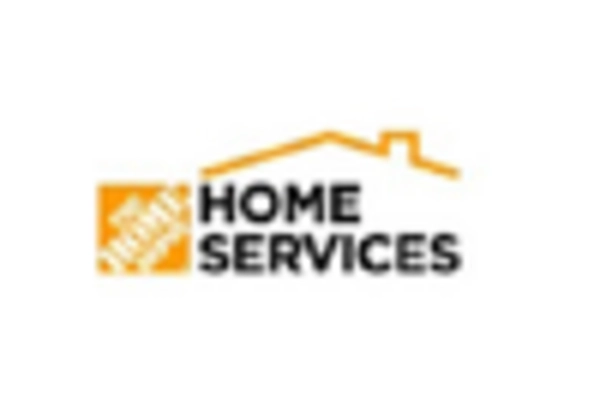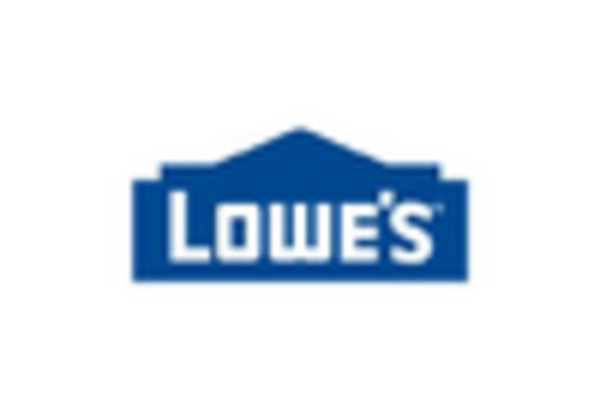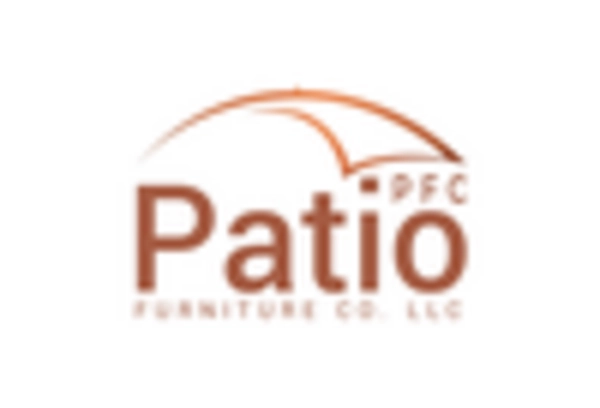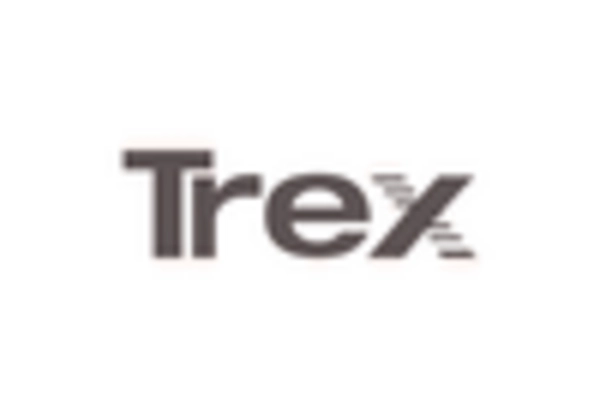Increased Focus on Health and Wellness
The outdoor furniture market is significantly influenced by the rising focus on health and wellness among consumers. As individuals seek to improve their physical and mental well-being, outdoor spaces are increasingly viewed as vital for relaxation and recreation. Research indicates that spending time outdoors can reduce stress and enhance mood, leading to a growing demand for comfortable and inviting outdoor furniture. This trend is particularly pronounced in urban areas, where limited space necessitates the creation of functional outdoor environments. Consequently, the market is likely to see a rise in products designed for comfort and usability, with an estimated increase in sales of around 7% in the next few years. This driver underscores the connection between outdoor living and overall health, further propelling the outdoor furniture market.
Growing E-commerce and Online Retail Channels
The outdoor furniture market is experiencing a transformation due to the rapid growth of e-commerce and online retail channels. With the convenience of online shopping, consumers are increasingly turning to digital platforms to purchase outdoor furniture. Recent statistics reveal that online sales in the furniture sector have surged by approximately 25% in the past year alone. This shift not only broadens the consumer base but also allows for greater access to a variety of products and price points. As a result, traditional retailers are adapting their strategies to include online offerings, further stimulating market growth. The outdoor furniture market is likely to benefit from this trend, with projections indicating a continued increase in online sales, potentially reaching 40% of total market sales by 2027.
Technological Advancements in Outdoor Furniture
Technological advancements are reshaping the outdoor furniture market, introducing innovative materials and designs that enhance functionality and durability. The integration of weather-resistant fabrics and lightweight, yet sturdy materials is becoming increasingly common. Additionally, features such as built-in heating elements and modular designs are gaining traction among consumers. Data suggests that approximately 30% of consumers are willing to pay a premium for technologically enhanced outdoor furniture. This willingness to invest in advanced products indicates a potential growth trajectory for the market, with expectations of a 6% increase in sales over the next few years. As technology continues to evolve, the outdoor furniture market is likely to adapt, offering products that meet the changing needs of consumers.
Environmental Awareness and Eco-Friendly Products
The outdoor furniture market is increasingly influenced by heightened environmental awareness among consumers. As sustainability becomes a priority, there is a growing demand for eco-friendly outdoor furniture options. Consumers are actively seeking products made from recycled materials or sustainably sourced wood. Recent surveys indicate that nearly 50% of consumers are willing to pay more for environmentally friendly products. This shift towards sustainability is prompting manufacturers to innovate and offer a wider range of eco-conscious options. Consequently, the outdoor furniture market is expected to see a growth rate of approximately 8% in the eco-friendly segment over the next few years. This driver highlights the importance of aligning product offerings with consumer values, ultimately shaping the future of the outdoor furniture market.
Rising Consumer Interest in Outdoor Living Spaces
The outdoor furniture market in North America experiences a notable surge in consumer interest towards enhancing outdoor living spaces. This trend is driven by a growing desire for home improvement and outdoor leisure activities. According to recent data, approximately 60% of homeowners express a preference for outdoor spaces that are both functional and aesthetically pleasing. This inclination towards outdoor living encourages investments in quality outdoor furniture, which is perceived as an extension of the home. As a result, the outdoor furniture market is likely to witness increased sales, with projections indicating a growth rate of around 5% annually over the next few years. This driver reflects a broader cultural shift towards valuing outdoor environments as essential components of lifestyle and well-being.


















Leave a Comment